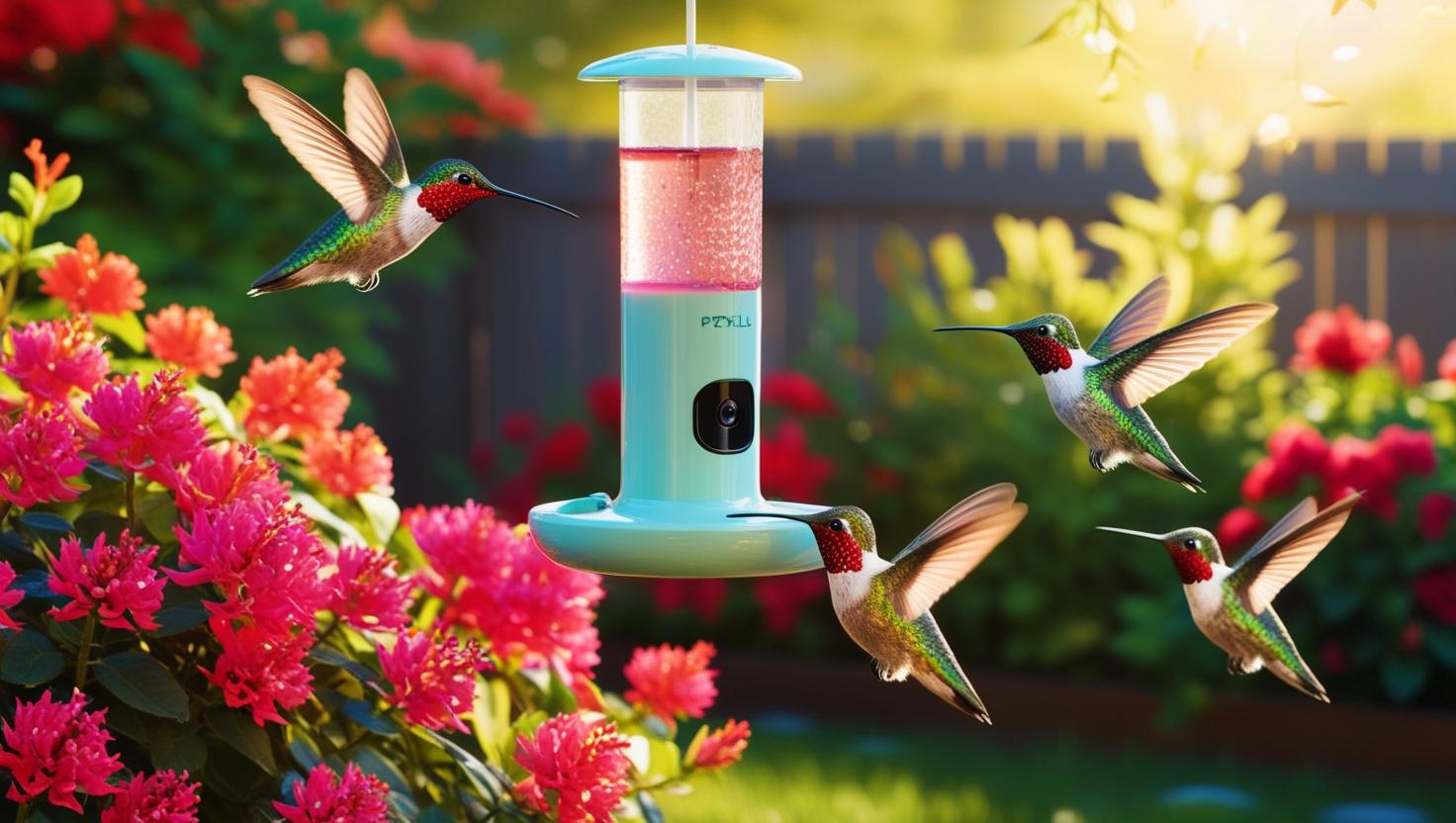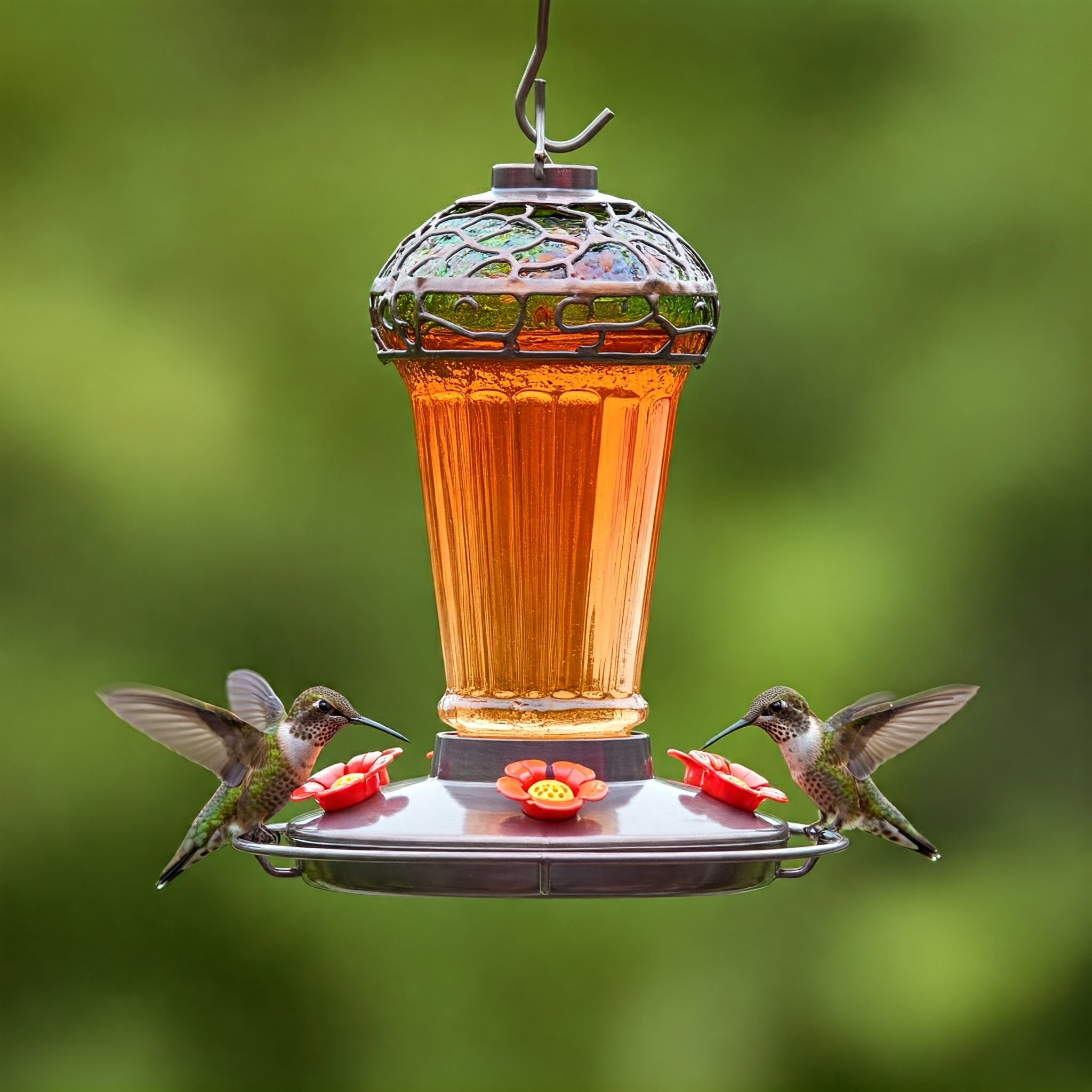The world of birdwatching has undergone a technological revolution, and at the forefront of this innovation is the smart hummingbird feeder. This ingenious device combines the allure of traditional bird feeding with the power of modern technology, offering a unique and immersive experience for nature enthusiasts.
Understanding the Smart Hummingbird Feeder
A smart hummingbird feeder is essentially a technologically advanced bird feeder equipped with a variety of sensors, cameras, and connectivity features. This integration of technology allows birdwatchers to monitor and interact with hummingbirds in real-time, providing a deeper understanding of their behavior, feeding habits, and ecological significance.
Key Features of a Smart Hummingbird Feeder
- High-Definition Cameras: These cameras capture stunning, high-resolution videos and images of hummingbirds, allowing for detailed observation of their intricate movements and vibrant colors.
- Motion Detection: Advanced motion sensors trigger the camera to record whenever a hummingbird approaches the feeder, ensuring that no precious moment is missed.
- AI-Powered Bird Identification: Sophisticated AI algorithms can identify different hummingbird species, providing valuable insights into local biodiversity and migration patterns.
- Real-Time Monitoring and Alerts: Users can receive instant notifications on their smartphones or tablets whenever a hummingbird visits the feeder, allowing for remote observation and interaction.
- Climate-Controlled Feeding: Some smart feeders feature temperature and humidity sensors that can automatically adjust the nectar flow to optimize feeding conditions for hummingbirds, especially during extreme weather.
- Remote Access and Sharing: Users can access their feeder’s live feed and recorded footage remotely, enabling them to share their birdwatching experiences with friends and family.
Benefits of Using a Smart Hummingbird Feeder
- Enhanced Birdwatching Experience: Smart feeders offer a level of detail and convenience that traditional feeders simply cannot match.
- Scientific Research: By collecting data on hummingbird behavior and population trends, smart feeders can contribute to scientific research and conservation efforts.
- Educational Tool: These devices can be used as educational tools to teach children and adults about the natural world and the importance of bird conservation.
- Stress Relief and Mindfulness: Observing nature has been shown to reduce stress and promote mental well-being. Smart feeders provide a calming and immersive way to connect with the natural world.
How to Attract Hummingbirds to Your Smart Feeder
To maximize the effectiveness of your smart hummingbird feeder, consider the following tips:
- Optimal Nectar Solution: Prepare a sugar-water solution using a 1:4 ratio of sugar to water. Avoid using honey or artificial sweeteners, as they can harm hummingbirds.
- Cleanliness: Regularly clean your feeder to prevent the growth of mold and bacteria, which can be harmful to hummingbirds.
- Strategic Placement: Position your feeder in a visible location, away from predators and strong winds. Consider adding nearby plants that attract hummingbirds, such as bee balm, trumpet vine, and salvia.
- Water Source: Provide a shallow birdbath or a dripping water source to attract hummingbirds for bathing and drinking.
- Avoid Pesticides: Pesticides can harm hummingbirds and other beneficial insects. Opt for organic gardening practices to create a safe and welcoming environment.
Frequently Asked Questions
- What is the best time of day to observe hummingbirds?
-
- Early morning and late afternoon are generally the best times to see hummingbirds, as they are most active during these periods.
- How long can hummingbirds go without food?
-
- Hummingbirds have a high metabolic rate and need to feed frequently. They can only go a few hours without food.
- Can I use red food coloring in hummingbird nectar?
-
- While red food coloring is not necessary, it can attract hummingbirds to your feeder. However, it is important to use food-grade coloring and avoid excessive amounts.
- How can I keep bees and wasps away from my hummingbird feeder?
-
- Choose a feeder with a bee guard or ant moat. You can also place the feeder in a location away from other food sources that attract bees and wasps.
- What is the average lifespan of a hummingbird?
-
- The average lifespan of a hummingbird is 3-5 years.
- Why do hummingbirds migrate?
-
- Hummingbirds migrate to warmer climates in search of food and better breeding conditions.
- Can I attract hummingbirds to my apartment balcony?
-
- Yes, you can attract hummingbirds to your balcony by placing a hummingbird feeder and planting nectar-rich flowers in containers.
- What are some common hummingbird predators?
-
- Common hummingbird predators include cats, snakes, and larger birds of prey.
- How can I protect my hummingbird feeder from squirrels?
-
- Use a squirrel-proof feeder or place baffles on the feeder pole to deter squirrels.
- What is the best way to clean a hummingbird feeder?
-
- Clean your feeder with hot, soapy water and rinse thoroughly. Avoid using harsh chemicals that could harm hummingbirds.
By incorporating smart hummingbird feeders into your birdwatching routine, you can unlock a world of wonder and deepen your connection with nature. These innovative devices offer a unique opportunity to witness the beauty and complexity of these tiny avian marvels.
By investing in a smart hummingbird feeder, you can elevate your birdwatching experience and gain a deeper appreciation for these fascinating creatures. With advanced features and real-time monitoring capabilities, smart feeders offer a unique opportunity to connect with nature and contribute to bird conservation efforts.


